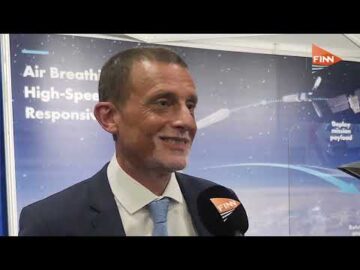
Decarbonizing energy and other industries globally using hydrogen will require investment of almost $15 trillion between now and 2050 according to European Transitions Commission.
More than $2 trillion of investment would be required in equipment and infrastructure to sustain the accelerating global momentum towards establishing hydrogen as a competitive element of a net-zero carbon emissions economy by 2050, the Green Metals and Hydrogen symposium.
IEA report that expects the world to require 322 million tonnes of hydrogen by 2050 to meet the emissions targets set out by the recent COP26 conference. The IEA also expects the world to require 3,585GW of electrolyzer capacity by then.
According to the Hydrogen Council’s ‘Hydrogen Insight 2021’ report, global investment in hydrogen projects reached more than $500 billion for 69GW of electrolysis capacity in 2021.
ITM Power has the largest capacity of PEM electrolyzers in the world, and to meet the IEA targets, the figures equate the equivalent of 35 centuries of current production in the next 29 years to meet that requirement. That’s the equivalent of $2 trillion in capital investment.
Hydrogen was used in cars and buses in small volumes before the battery electric vehicle boom. Now there are over 6 million electric cars per year while there are just over 60,000 hydrogen cars per year in 2022.
Japan and South Korea have some hopes for a hydrogen fuel cell success. Japan wants it because they have Toyota and Honda hydrogen fuel cell cars and some of the hydrogen vehicle business looks like the gasoline business. Some of the engine and engineering technology transfers. There needs to be over $2 trillion spent to get to a meaningful starting point to compete with battery electric today. Battery electric continues to improve and will be 30-80 million vehicles per year in 2030.
Hydrogen has no efficiency advantages as shown in the top chart. Hydrogen has no cost advantages.
All of the pipeline and old school companies that will get wrecked with battery electric domination can try to bribe politicians and get more billions of dollars (already $500 billion). However, this will fail and end up being a wasteful dead end.
Storing Hydrogen
Storage of hydrogen is a key component of the hydrogen energy infrastructure and includes both long-term storage for future distribution as well as short-term storage for transport applications such as PEM FCEVs. Hydrogen can be stored as a gas in compressed high-pressure tanks (350-700 bar) or underground caverns, as a liquid cryogenically (-253°C boiling point at 1 atm), or as a solid within a variety of powdered materials. Storage methods for both long- and short-term face a set of significant scalability challenges.
Gaseous hydrogen has almost 3x the energy of gasoline fuel (120 MJ/kg vs 44 MJ/kg), it is also 4x less dense (8 MJ/L vs 32 MJ/L). Lightweight but crash resistant compressed gas containers capable of withstanding high pressures and large enough to meet consumer needs.
Moving Hydrogen
There are several ways to transport hydrogen, varying by application and distance. Chemical and industrial applications tend to use pipelines, which direct the hydrogen from production sources across relatively short distances to large users. The US currently has over 2500 km of H2 pipelines and the EU plans to have 6800 km by 2030. It is a challenge to monitor these long stretches of pipeline for leaks and damages.
Brian Wang is a Futurist Thought Leader and a popular Science blogger with 1 million readers per month. His blog Nextbigfuture.com is ranked #1 Science News Blog. It covers many disruptive technology and trends including Space, Robotics, Artificial Intelligence, Medicine, Anti-aging Biotechnology, and Nanotechnology.
Known for identifying cutting edge technologies, he is currently a Co-Founder of a startup and fundraiser for high potential early-stage companies. He is the Head of Research for Allocations for deep technology investments and an Angel Investor at Space Angels.
A frequent speaker at corporations, he has been a TEDx speaker, a Singularity University speaker and guest at numerous interviews for radio and podcasts. He is open to public speaking and advising engagements.







